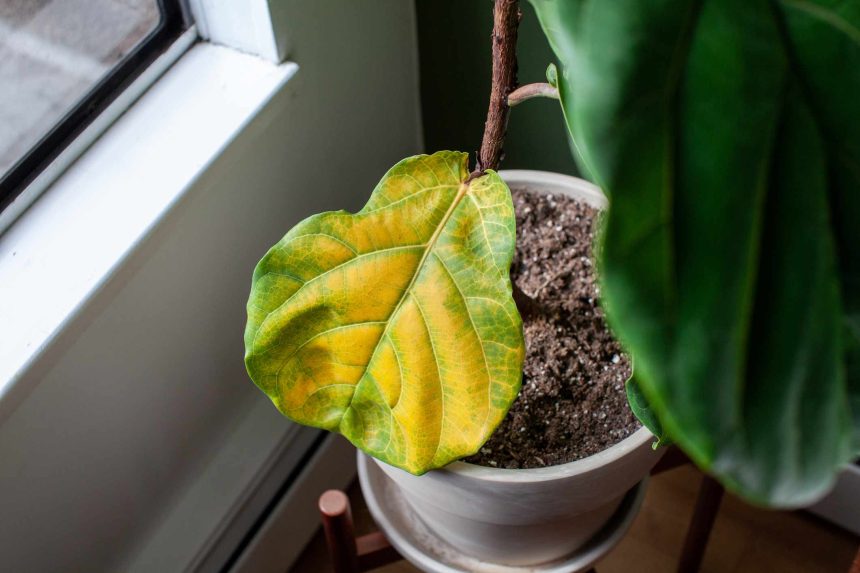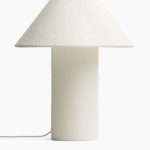Plenty of houseplants are easy to grow, even if you’re just starting out on your journey as a plant parent. Low-maintenance varieties like spider plants, pothos, ZZ plant, and aloe vera can withstand the occasional misstep, tolerate a wide range of conditions, and survive occasional (or frequent) neglect.
Then there are the finicky, high-maintenance divas of the houseplant world: your light-hogging bird of paradise, moisture-craving Boston fern, and colorful crotons, which have a habit of dropping those rainbow-hued leaves if you so much as sneeze in their direction.
Another houseplant that’s notorious for shedding its foliage without warning? The lush, stately fiddle-leaf fig, which can go from being the star of your plant collection to an oversized twig seemingly overnight.
Why Fiddle Leaf Fig Is Not a Beginner-Level Houseplant
The Spruce / Adelyn Duchala
With its large, lyre-shaped leaves and ability to grow up to 10 feet tall indoors, it’s natural for houseplant newbies to want to try growing this beautiful, tropical tree.
Native to the rainforests of central and western Africa, fiddle leaf figs evolved to thrive in warm, humid conditions with very well-drained soil and lots (but not too much) indirect light. They even benefit from being slightly potbound—a pro for any beginning gardener.
That sounds like a lot of plants we grow indoors in temperate regions, right? But fiddle leaf figs can be happy in the conditions you provide them for months or years, then suddenly suffer with what seems to be a very small (or seemingly no) change in care.
Too much or too little water, not enough light, shock from a sudden change in growing conditions—all can trigger the dreaded leaf drop. First leaves begin yellowing at their bases, then develop brown patches, then fall off entirely. Once it begins, there’s nothing for it but to try to save a few cuttings with healthy leaves and try again. You may be able to nurse a denuded fiddle leaf fig back to life, but its leaves won’t regrow in their original spots.
If this wasn’t traumatic enough for a beginning gardener, the fact that fiddle leaf figs tend to be on the pricier side—especially if you buy them as nice, tall specimens. That can be a lot of money to gamble on such a finicky, fiddly plant.
Want more gardening tips? Sign up for our free gardening newsletter for our best-growing tips, troubleshooting hacks, and more!
Why Rubber Plant Is a Beginner-Friendly Alternative
The Spruce / Jason Donnelly
If you’re a beginning gardener looking for a tall houseplant with verdant jungle vibes, there’s a safer bet than a fiddle leaf fig. Instead of blowing your houseplant budget on a high-risk fiddle leaf fig, try starting with its easygoing cousin, the rubber plant, instead. This fellow member of the genus Ficus is faster-growing, just as pretty, and much more forgiving—not to mention generally more affordable.
If it’s the dramatic height you crave, rejoice—rubber plants can grow rapidly, up to two feet each year in optimal indoor conditions.
In addition to their beauty and height, rubber plants are much easier to care for than fiddle leaf figs. Their Achilles heel is overwatering, so err on the side of neglect and you’ll do just fine—especially in winter, when they benefit from little to no water. Keep them away from sudden changes in temperature, give them lots of indirect light and average humidity, and watch them thrive.
Even better? Rubber plants are very easy to propagate—meaning that if you do run into problems, you can try to regrow some healthy growth tips into new plants, or enjoy sharing props from a healthy plant with friends.
Part of the joy of houseplant care is learning from your mistakes. I’ve learned more from the specimens I’ve killed (or almost killed) in my 15-year plant journey than from the ones I’ve helped thrive. But there’s no reason to invest big bucks in a fiddle leaf fig when you’re just starting out. Instead, save your pennies and wait until you’ve gotten the hang of something easier and more affordable like a rubber plant instead.







